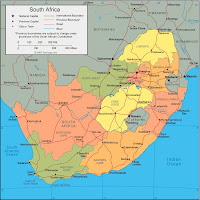In these times of economic uncertainty, there are many reasons a company may want to implement e-Invoicing (Electronic Billing,
EBPP,
EIPP, Paperless Billing) processes with both their suppliers and their customers. Let's start out discussing why a company may want to consider implementing e-Invoices with their customers.
- Reduced paper costs
- Reduced printing costs
- Reduced handling costs
- Reduced postal costs
- Reduced (DSO - days sales outstanding)
- More environmentally friendly (Go Green)
- Compliance with local tax authorities
- Reduced payment processing costs
- Reduced data entry costs (entering payment information from paper)
- Reduced data entry errors
- Reduced billing disputes
- Reduced paper storage
There are also many reasons a company would want to accept electronic invoices from their suppliers which we will discuss later in this article.
How does a company implement e-Invoicing with their customers? Let's lay-out a plan:
- The company must notify their customers that they want to implement an electronic invoice process with them and get their agreement. This is typically done via a letter and/or email sent to the accounts payable department of your customer.
- The notice should request that the customer read and agree to the terms of the online agreement form, and then register to participate.
- Once the online form is completed and the customer agrees to accept invoices electronically, the agreement should be automatically emailed to the customer for printing and safe keeping.
- The online form should also include a survey of the customer's electronic data exchange (B2B)capabilities. Can your customer exchange EDI or other B2B data formats, or do they want to exchange invoice information only via email or a web portal?
- Once your customer is ready an email should be sent to them with a link to a secure website where they can login and view current and past invoices. This reduces the customer support and accounts payable workload. This portal should allow the company to see when their customer's read and/or download the invoices. Unread invoices should be flagged and the company alerted that more customer training may be necessary.
- e-Invoices that must contain a digital signature that is compliant with tax authority regulations must be archived. The length of time that electronic invoices must be archived differs widely depending on local regulations. It is often from 5-10 years.
- If your customer is a high volume customer and can support EDI or other B2B data exchanges then the portal may be useful to check on the status of invoices, but a fully automated B2B process may be more efficient.
- The portal should also enable both you and your customers the ability to verify the integrity of the digital signature. The portal should have integrated functionality to send a verification request to the digital signature authority and receive a response. This ensures that the invoice on record and in the archive is valid.
Now on to the topic of implementing the exchange of electronic invoices with your suppliers. This linked blog
article highlights some of the costs and benefits, but let's address some of the issues here.
- Large companies often receive tens of thousands of paper invoices monthly. These must be received in a mail room, opened, organized and moved to the appropriate processing centers where the invoices are manually read and the data entered into the accounting system. Many large companies receive invoices in dozens of different locations where this process is repeated. The manual processing of invoices can be a huge expense.
- Unprocessed paper invoices prevent management visibility into the true state of liabilities.
- The longer it takes to process an invoice, the more customer service and accounts payable issues arise.
- Unprocessed or slow processing of supplier invoices prevent companies from realizing early payment discounts that may be offered by suppliers.
It is important to note that not all problems with supplier invoices can be solved through EDI, B2B or other forms of electronic invoicing. This
article details business process challenges that often need to be corrected before the full value of electronic invoices and accounts payable optimization measures can be realized.
There are several key areas that I would suggest looking at first when considering how to optimize the accounts payable processes in a large company.
- Consider the consolidation of disparate software systems into one ERP
- Define and implement formal invoice approval work flows
- Consolidate management of invoice receipt into shared service centers
- Outsource the scanning/OCR solution to lift data from paper invoices
- Implement an automated invoice approval work flow engine
- Convert paper invoices to electronic invoices by implementing EDI, Supplier Web Portals or other B2B strategies.
- Implement an electronic payment system
- Consider how a consultant might help you manage through this sort of process change
Click here to go to most recent blog postings...
***************************************
Paul
Diegelmanhttp://www.linkedin.com/in/pauldiegelman
***************************************
Kevin Benedict
http://www.linkedin.com/in/kevinbenedict
http://b2b-bpo.blogspot.com/
***************************************



